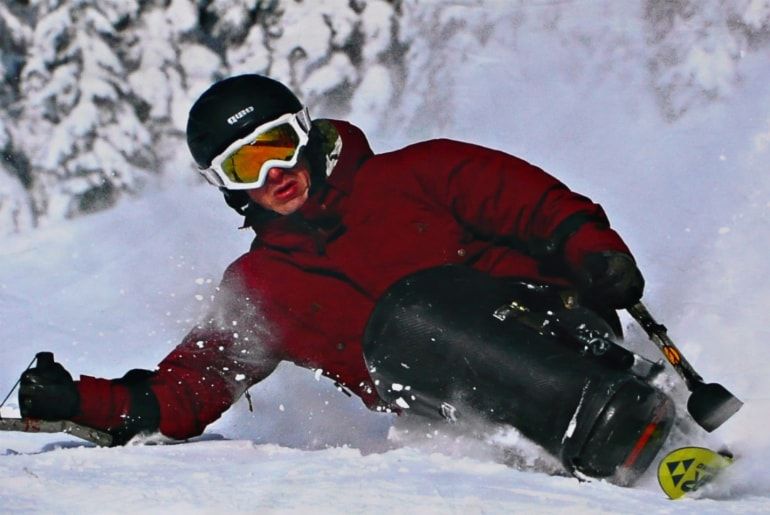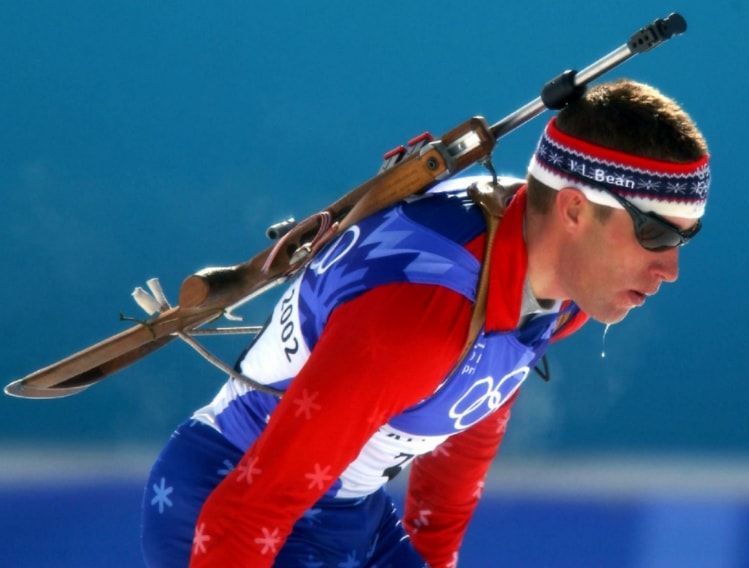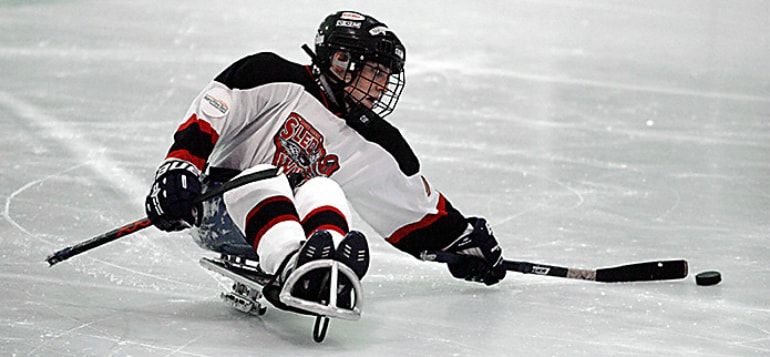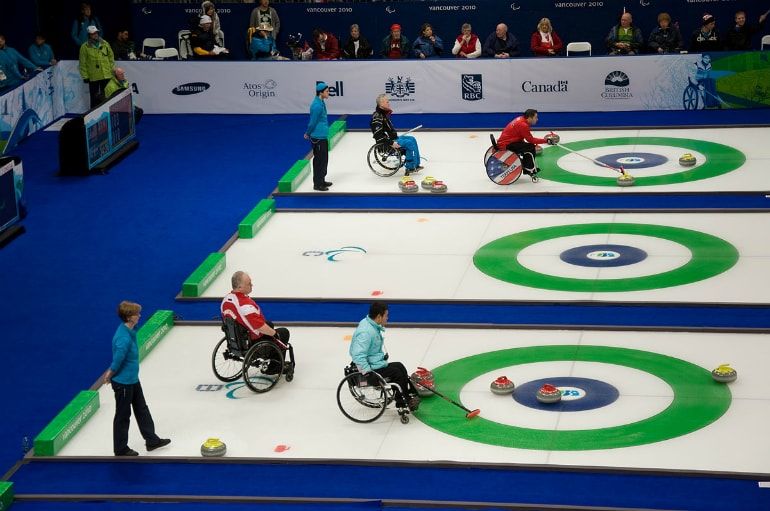Share:
Take it offline!
This Education in Motion resource is also available as a printable PDF.
Download PDF
The Paralympic summer games are not the only sport event worth watching – the winter games are equally exciting. Since 1976, they are held after the Olympic Winter Games. Para-skiing was the first discipline that was introduced. Throughout the years, the following sports were recognised as a Paralympic sport: para biathlon, para ice hockey, wheelchair curling, and para snowboard. Since these games are relatively young, the disciplines regularly change. For example, in the 2022 Paralympic Winter Games in Beijing, bobsleigh has been announced as a new discipline.
How it all began: skiing
Whenever you think of Winter Games, skiing will surely come to mind. Athletes with disabilities can test their skills in a wide range of disciplines: slalom/giant slalom, snowboarding, Nordic skiing, and biathlon. In contrast to the Paralympic Summer Games, only athletes with physical disabilities are usually allowed to participate.
Para alpine skiing

Para alpine skiing was introduced during the first Paralympic Winter Games in 1976 which were held in Örnsköldsvik, Sweden. Athletes can participate either in slalom or giant slalom. In 2006, three participation categories were determined: sitting, standing and for visually impaired. Depending on the category, different aids may be used. People with visual impairments, for example, have a guide who ski with them and give them verbal directions. Participants who are paraplegic, may sit in a sled-type of ski, also called monoski. Their ski poles have been specifically adjusted to their heights and help them manoeuvre the terrain. Depending on the severity and type of disability, athletes are assigned to one of several classes.
Para snowboard
This newest addition to the Paralympic Winter Games was first seen in 2014 in Sochi, Russia. Only athletes with physical disabilities may participate. There are currently two categories: one for people with disabilities in the upper extremities, and one for people with disabilities in the lower extremities. It is currently co-organized with World Para Snowboard. The rules and competition are still in early stages of development.
Para Nordic skiing
Just as is the case with para alpine skiing, athletes can compete in different categories: sitting, standing or with an acoustic guide. Like its able-bodied counterpart, para Nordic skiing requires participants to ski a certain distance within a certain time. This discipline was also one of the first disciplines introduced during the 1976 Paralympic Winter Games. To judge the athlete’s performance more fairly, the International Paralympic Committee has introduced a percentage system. With the help of a mathematical formula, the starting class and the skiing time is considered. The result is then compared to the results of the other participants. After every skiing season, the IPC checks whether the formula needs to be adapted for the following year.
Para biathlon

Since the end of the 1980’s, another variety of Nordic skiing has been accepted as a Paralympic discipline: para biathlon. Not only do athletes need to ski a certain distance, they also need to shoot at targets with a rifle. If they want to hit the mark, they therefore need to possess a lot of stamina. People with visual impairments may also participate in this sport. When they are at the shooting range, they hear an acoustic signal which changes, the closer they are to the target.
Para ice hockey

Para ice hockey is one of two team sports accepted as a Paralympic sport, however it was only introduced in 1994. Just as in able-bodied ice hockey, para ice hockey is a fast-paced and intense sport which can be physically demanding for the participating athletes. Currently, only athletes with disabilities in the lower extremities are allowed to participate. During the Paralympic Winter Games in 2010 in Vancouver, women could participate as well, yet para ice hockey remains a male-dominated sport.
Wheelchair curling

Wheelchair curling is the second team sport recognized as a Paralympic discipline. Athletes who require a wheelchair due to their disabilities may participate. There exists no further classification according to type and severity of disabilities. Wheelchair curling was introduced during the Paralympic Winter Games in 2006.
In contrast to skiing or ice hockey, recreational wheelchair curling does not require special equipment. If your wheelchair is properly cared for, you can use this to participate in this sport. To stabilise yourself during release of the stone, your fellow team mates hold on to you. To play the stone, you use a telescope-like stick which attaches to the stone. Unlike Olympic curling, you are not allowed to change the course of your stone, once you released it. Thus, the athlete needs to aim precisely at the target. The World Curling Federation has published some interesting videos regarding wheelchair curling.
Discover more sports on our blog
Of course, there are all kinds of sports which have been adapted for people with disabilities. Curious to find out which ones? Then feel free to check out our blog where we introduce many more disciplines. Don’t forget to subscribe to our newsletter so you don’t miss out on any news.
Finding the right sport for you
You do not need to be a professional athlete to perform the sports we introduced in this article. Look around you – there might be a ski club for people with disabilities right around the corner. Here at Sunrise Medical we can provide you with the necessary equipment. Take a look at our variety of sports wheelchairs.